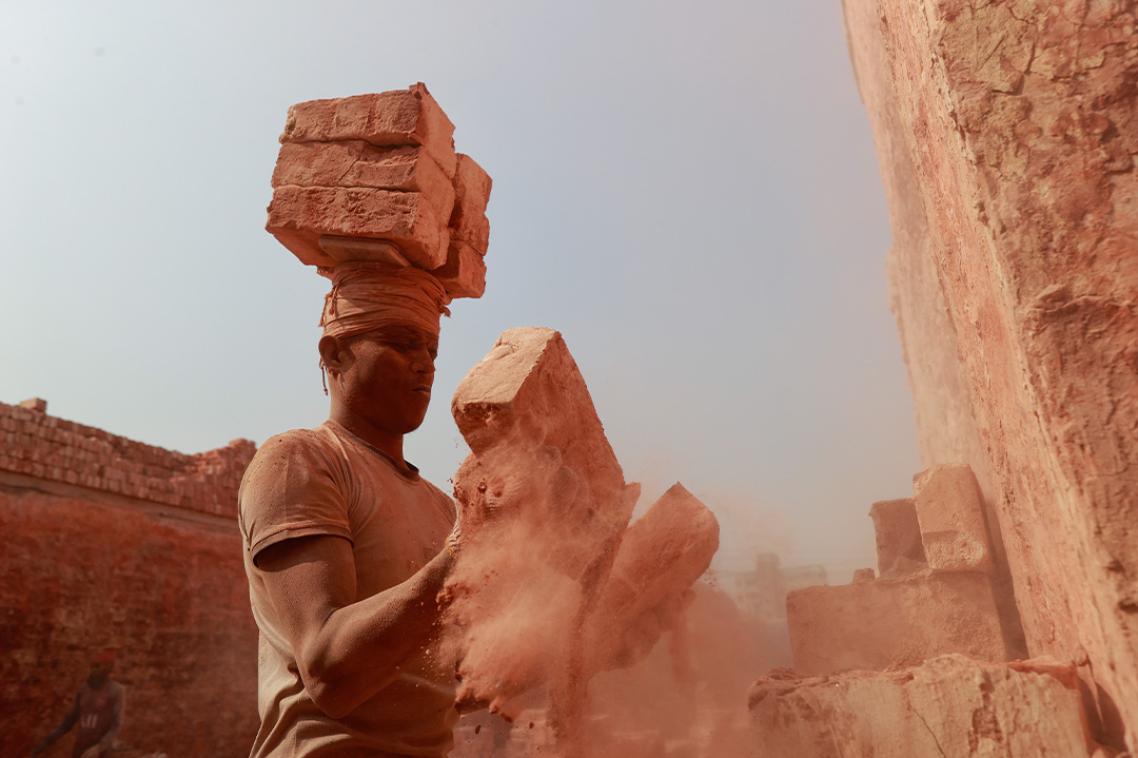How the rush for critical minerals is neglecting human needs

UQ researchers at the Sustainable Mineral Institute’s Global Centre for Mineral Security are especially concerned about how people in poverty get access to mineral products including clay bricks for houses.
(Photo credit: Suvra Kanti Das/Getty Images. )
Born of wartime rationing and branded by the energy transition, critical minerals haven't taken a national security turn, that's always been their meaning.
Today we write in Nature that a minerals strategy built only for national security risks deepening global inequality.
The origins of ‘critical minerals’
The term ‘critical minerals’ has its roots in strategic military planning, referring to materials essential to a country’s economy or defence but vulnerable to supply disruption.
The phrase surged in popularity after a 2010 diplomatic spat between China and Japan was blamed for a disruption in rare earth exports.
The US, EU, Australia and others have since raced to compile lists of minerals they deem ‘critical’ and develop strategies to secure them.
In recent years, the term has mistakenly been used by many commentators to refer to the minerals essential for renewable energy technologies. Most “critical minerals,” however, are not energy transition minerals, and many energy transition minerals are not on “critical mineral” lists.
Critical minerals are simply those that importing countries find hard to access. This framing inevitably narrows the conversation to geopolitics and national security.
But if our goal is a truly sustainable world, we must think beyond just the mineral security needs of advanced industrialised states.
We must be concerned with the mineral security of all humanity, the minerals that put a roof over our heads, filter our water, preserve our food, nourish our bodies, and connect us to each other.
Low- and middle-income countries of Africa, Latin America and parts of Asia often export raw materials but struggle to access the mineral-based products they need for their own development:
- Africa produces 30 million tonnes of fertiliser annually but imports 90 per cent of the fertiliser used there.
- The Democratic Republic of Congo supplies 72 per cent of the world’s cobalt, a key ingredient in batteries, but Africa is projected to have only 0.1 per cent of the global battery production market by 2030.
- Latin America exported almost 2,000 kilotonnes of lithium between 2002-2022, but less than 1 per cent returned to the region in the form of finished goods.
From national security to human security
Not too many years ago all natural resources were framed in a way that prioritised national security, until they took on human-centred meanings,
In the 1990s, Nobel laureate Amartya Sen helped reframe food security from a supply issue to one of access and affordability.
The same shift has happened in energy and water policy.
It is time to do the same for minerals.
UQ Sustainable Mineral Institute’s Global Centre for Mineral Security defines mineral security as when all people have sufficient and affordable access to the minerals and mineral-products necessary for human development, whether for shelter, mobility, communication, energy or sustenance.
We are especially concerned about how people experiencing poverty get access to, for example, the clay bricks for houses and glass-wool insulation to keep them warm; the cement to build wells and chlorine to purify the water; the mineral fertilisers to grow crops, the iron and zinc to fortify grain, and the salt to preserve food and provide direct nutrition; the fluoride to protect teeth and limestone for the toothpaste to keep them clean; and the gypsum chalk for school tuition.
This human-centred approach doesn’t replace national strategies, it complements them.
Development agencies should integrate minerals into poverty reduction strategies.
Governments should reorient geological surveys and industrial policies to meet domestic needs, not just export targets.
International partnerships should be mutual, so that countries wanting secure critical minerals, offer support back to help the mineral security needs of the countries suppling them
Minerals and the sustainable development agenda
The United Nations’ Sustainable Development Goals, adopted by all UN member states in 2015, aim to end poverty, protect the planet and ensure prosperity for all.
Yet minerals are conspicuously absent, the only natural resource not mentioned in the 15,000-word framework.
This omission has consequences.
Overseas development assistance to the mineral sector has plummeted, representing just 0.2 per cent of global aid by 2021.
This gap reflects a deeper issue.
Minerals have long been seen only as a problem to be governed, rather than part of the solution for human need.
Mining can cause harm to people and the environment, but so to can agriculture, energy and water extraction.
The difference is those sectors have undergone a shift in thinking that has put people at the centre of policy and it’s time minerals were treated the same.
If we were to ask what minerals are needed to lift people out of poverty, we’d likely come up with a very different list than the ones currently guiding global policy.
We would prioritise access, affordability and sufficiency, not just supply chain resilience.
Minerals are not just the building blocks of technology, they’re the building blocks of dignity.
For a just and sustainable future, instead of asking what minerals are critical to us we need to start asking what minerals are essential to everyone.
Related articles

Anyone can be a hacker with AI – so what does that mean for the cyber defence industry?

Brazil claims to be an environmental leader. Are they?
Media contact
UQ Communications
communications@uq.edu.au
+61 429 056 139
